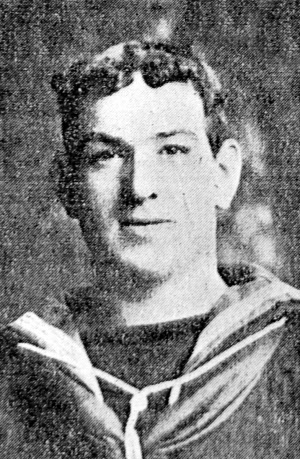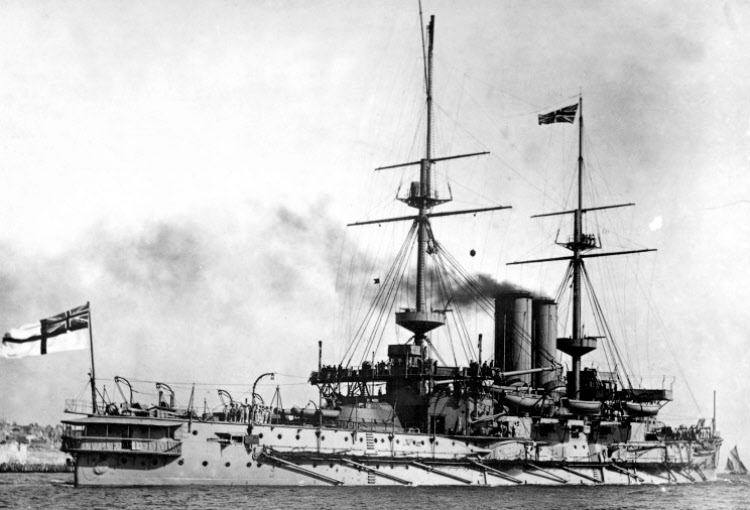
Willie Peaker Whitaker was born in 1882 at Mexborough, South Yorkshire, the son of Leeds born Edwin Whitaker and his wife Myra (nee Morton) from Wakefield who had married in 1874 in the Wakefield Registration District.
In 1891 the couple are living at Townend, Ossett with their six children aged between 4 and 15 years of age. Edwin Whitaker is working as a watchmaker. In 1901, Willie aged 18, an iron moulder, is living with his parents and two of his siblings at Kirkgate, Wakefield where his father trades as a watchmaker. Two boarders are also staying in the Whitaker household.
By 1911 the family have returned to Ossett where they live at 44, Prospect Road. Edwin is aged 72 and still working as a watchmaker. He has been married to his 57 year old wife Myra for 37 years and they have six children, who all survived to 1911. Willie, is a General Labourer, and two of his siblings are also living with their parents. Edwin Whitaker died in Ossett in 1916 aged 73 years (possibly 76 years) and Myra Whitaker died in Ossett in 1922 aged 67.
Willie Whitaker joined the Royal Navy on the 3rd February 1906 when he was 21 years old. He signed on for five years in service, followed by seven years in reserve. He was 5’ 2¼” tall with a chest measurement of 38 inches with black hair, brown eyes and a dark complexion. His right forearm bore the tattoo of a woman, the back of his right hand had a tattoo of clasped hands & heart and ‘W.P.W. Mary’ on the back of his left hand.
His service began as a Stoker II at HMS Vivid Training Barracks at Devonport and it was the 29th January 1907 before he joined HMS ‘Diamond’ at sea where he was subsequently made up to a Stoker I. Over the following four years he served for 21 months at sea. interspersed with shore postings at Vivid Barracks Devonport.
At the end of his first five years engagement on the 5th February 1911, Willie was transferred to Royal Fleet Reserve (R.F.R.) ashore at Portsmouth. On the 13th July 1914, he served aboard HMS ‘Illustrious’ for 12 days before being transferred to Channel Fleet ships HMS ‘Talbot’ and HMS ‘Prince George’ where he was aboard until the 17th August 1914. He was then posted to HMS ‘Goliath’. Throughout his various postings his character was always marked as ‘very good’.
Willie Peaker Whitaker was posthumously awarded the British and Victory medals and also the 1914/15 Star medal.
Seventeen days after the Gallipoli landing, in the early hours of the 13th May 1915, HMS ‘Goliath’, a Canopus-class pre-Dreadnought battleship, first launched in 1898, was lying at anchor in the straits at Morto Bay, and was providing artillery support for the Allied forces at Gallipoli. For some days HMS ‘Goliath’ and HMS ‘Cornwallis’ had been holding the Turkish war lines in Ariburnu and Seddulbahir under heavy bombardment.
The 72m long Turkish torpedo boat the ‘Muavenet-I-Miliet’, which had been built in 1909 in Germany, weighing in at 620 tons with two torpedo tubes, that night was being commanded by a German torpedo expert Lieutenant Firley with a part-German crew. For some days previously, the Turkish forces had planned a raid on the HMS ‘Goliath’, which had been causing considerable casualties to the Turkish defending forces at Gallipoli.
Under the cover of heavy fog, at midnight, on the night of the 12th/13th May 1915, the ‘Muavenet-I-Miliet’ was taken down the Straits, stern first, to attack HMS ‘Goliath’ and was mistaken in the dark for a British vessel. She fired three torpedoes at the Goliath at short range, all of which hit home, and then made good her escape. The Goliath exploded and sank in two minutes into the 70m deep waters of Morto Bay, just east of Sedd-el-Bahr, with the loss of 570 men, including Willie Whitaker.
At the time this happened the British destroys ‘Wolverine’ and ‘Scorpion’ were patrolling in Eren Keui Bay, on the Asiatic side of the Straits. HMS ‘Scorpion’ intercepted a wireless signal in German saying that a battleship had been sunk and that the ship responsible was retiring. HMS ‘Scorpion’ raced up the narrows to cut off the ‘Muavenet-I-Miliet’, intercepting other wireless signals on the way. A previously abandoned British submarine was almost rammed in error by the HMS ‘Scorpion’ with her captain thinking it was the escaping ‘Muavenet-I-Miliet’. However, the raider slipped away unchallenged and made good the escape.
At the outbreak of World War One, HMS ‘Goliath’ joined the 8th Battle Squadron of the Channel Fleet and went to Loch Ewe to become guard ship. She covered the landings of Marines at Ostend on the 26th August 1914 and then went to the East Indies in September 1914 for convoy protection duties. The ship was diverted to East Africa in November 1914, and took part in the operation against the Konigsberg in the Rufiji River, then bombarded Dar-es-Salaam on January 2nd 1915. In April 1915, the HMS ‘Goliath’ went to the Dardanelles where she was sunk.
The “Ossett Observer” 1 had this obituary for Willie P. Whitaker:
“Ossett Sailor Lost in the Goliath – Official intimation was received last weekend by Mr. and Mrs. Edwin Whitaker, of Prospect-road, Ossett, to the effect that their son, First-class Stoker Willie Peaker Whitaker, was among the crew who perished when H.M.S. Goliath was torpedoed and sunk by the enemy in the Dardanelles a fortnight ago. Deceased, who was 32 years of age and unmarried, had been on the naval reserve for about three years when war broke out and for some time had been employed at the Gedham mill of Messrs. Glover and Ellis. He had resided with his parents and left home on July 13th for his annual month’s training, but hostilities commenced before this was completed, and he never returned home. He was one of the many reservists who manned the Goliath.”

Above: HMS ‘ Goliath’ torpedoed and sunk at Morto Bay, Gallipoli on the 13th May 1915.
Willie Peaker Whitaker, died on the 13th May 1915, aged 33 years, the son of the late Myra Whitaker, of Ossett, Yorkshire and is remembered on Panel Reference 7 at the Plymouth Naval Memorial 2, Plymouth, Devon. The Memorial is situated centrally on The Hoe which looks directly towards Plymouth Sound. It is accessible at all times.
After the First World War, an appropriate way had to be found of commemorating those members of the Royal Navy who had no known grave, the majority of deaths having occurred at sea where no permanent memorial could be provided. An Admiralty committee recommended that the three manning ports in Great Britain – Chatham, Plymouth and Portsmouth – should each have an identical memorial of unmistakable naval form, an obelisk, which would serve as a leading mark for shipping. The memorials were designed by Sir Robert Lorimer, who had already carried out a considerable amount of work for the Commission, with sculpture by Henry Poole. The Plymouth Naval Memorial was unveiled by HRH Prince George on 29 July 1924.
References:
1. “Ossett Observer”, 27th May 1915